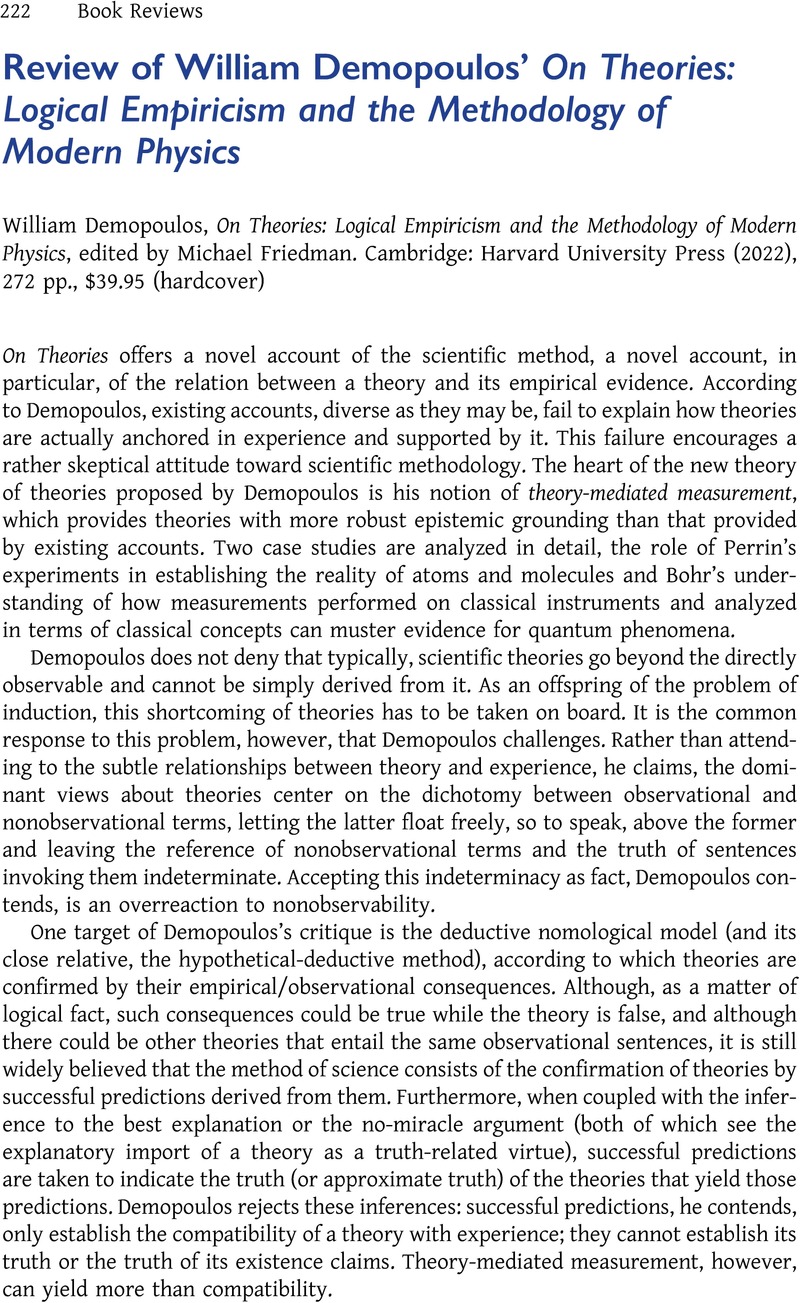No CrossRef data available.
Article contents
Review of William Demopoulos’ On Theories: Logical Empiricism and the Methodology of Modern Physics - William Demopoulos, On Theories: Logical Empiricism and the Methodology of Modern Physics, edited by Michael Friedman. Cambridge: Harvard University Press (2022), 272 pp., $39.95 (hardcover)
Review products
William Demopoulos, On Theories: Logical Empiricism and the Methodology of Modern Physics, edited by Michael Friedman. Cambridge: Harvard University Press (2022), 272 pp., $39.95 (hardcover)
Published online by Cambridge University Press: 02 March 2023
Abstract
An abstract is not available for this content so a preview has been provided. Please use the Get access link above for information on how to access this content.

- Type
- Book Review
- Information
- Copyright
- © The Author(s), 2023. Published by Cambridge University Press on behalf of the Philosophy of Science Association


